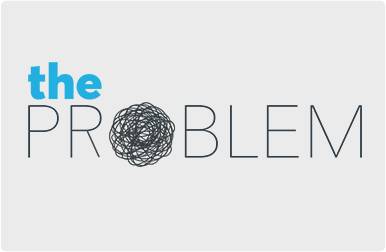Transcript
Phil Lofton:
Hey, everybody!
On this week’s bonus episode, we’re taking a closer look at a massive, first of its kind study that’s examining the long-term effects of an under-studied, under-diagnosed type of dementia: early onset Alzheimer’s.
We’ll be talking to the scientist leading the study, and learning about this tragic form of the disease.
Welcome to The Problem. I’m your host, Phil Lofton.
[THEME]
Meet Liana Apostolova.
Liana Apostolova:
First and foremost, I’m a neurologist with a subspecialty in cognitive disorders, which makes me an Alzheimer’s disease expert, believe it or not. In addition to that, of course, I’m an avid researcher and also a teacher and a mentor of the new generations of Alzheimer’s disease experts and future scientists. I came to Indiana university in 2015 from UCLA, attracted by a fantastic opportunity to grow a research program here and have no regrets to have done so.
So when I initially joined my funded projects had to do mostly with late onset Alzheimer’s disease and more specifically with clinical and cognitive measures with imaging biomarkers and with genetics as well. Since I’ve joined, I’ve taken on the opportunity to lead a national study, a multisite study on early onset Alzheimer’s.
Phil:
Early onset Alzheimer’s is a rare form of the disease, affecting an estimated 200,000 people in the United States.
But that number may be way off due to under-diagnosis. And we may be missing some opportunities to help patients affected by this disease.
What is it about early onset Alzheimer’s that makes it so different from older onset Alzheimer’s disease?
Liana Apostolova:
Well, as the name implies, early onset or also known young onset Alzheimer’s disease are individuals who are much younger than the typical age of the sporadic Alzheimer’s disease cases. Ordinarily, Alzheimer’s disease hits individuals in their seventies and eighties. Here we’re talking about individuals younger than 65 and oftentimes in their forties and fifties. Well, that is a very productive time of life.
So these individuals are still breadwinners they still raise children or support them through their higher education. Many of them are not even ready to retire financially or do not have any health insurance sort of long-term plans if they were to lose their job. And then they’re struck by this devastating disease.
So it’s, it’s a very difficult subtype of Alzheimer’s disease. For me as a provider and for the family of course to deal with. It’s devastating when it happens as it takes one of the breadwinners out from being available to bring income home and either the other one or children become caregivers. If you think about it, sometimes parents become caregivers, which is extremely sad of course to see it is a challenging type of disease to and one that is quite neglected in research, one that is misdiagnosed often. The other challenges that doctors face and, and identifying this type of disease is first of all, providers do not consider that at the age of 50, you could have Alzheimer’s.
So there is this agnosia if you will that this can be it. Besides that many physicians puzzled by the young onset often attribute the changes that the individuals experienced to psychiatric disorders, to strokes. There their language impairments to menopause in women. In all of that of course is quite inaccurate. So these individuals remain undiagnosed or worse, misdiagnosed for years on end without any education or support without proper therapy. And the families are, you know, frankly not understanding what’s happening. Many of them, the family members do not belief the complaints of their beloved one. They minimize them. They become angry with the person that’s suffering from cognitive impairment as they do not understand what is it that is going wrong. So accurate diagnosis is something very important. Furthermore, they’re a typical variants, very much more often seen an early onset compared to late early onset presents with the typical memory predominant onset of symptoms.
Maybe half of the time the other 50% of patients actually have either visual problems or language problems or more of a dis executive type of problem.
Phil Lofton:
And you can you unpack that term real quick?
Liana Apostolova:
Sure. the dis-executive means that they struggle with organization multitasking planning. So that’s really the, the, the most salient future of the human brain to organize one’s life and very complicated tasks and working and juggling family, all of that. And some individuals don’t have profound memory impairment but have significant decline in this domain and then end up having, being diagnosed with Alzheimer’s. So, these subtypes, the language, the visual, the dis executive there are oftentimes not recognized by non-dementia experts. They are rare. They’re very unusual and puzzling. These are the few features that actually prevent from early onset Alzheimer’s disease to be recognized, diagnosed and treated accordingly.
Dr. Apostolova recently received the largest grant in the School of Medicine’s history– nearly 45 million dollars– –to conduct a nationwide study to help better understand early onset Alzheimer’s. That grant has been supplemented with another one million dollars from the Greater Indiana Alzheimer’s association – which is the chapter’s biggest research grant ever.
So the LEADS study stands for Longitudinal Early Onset Alzheimer’s Disease Study. It started in a year and a half ago. And as recruiting individuals with early onset Alzheimer’s as well as cognitively normal controls characterizing them very in, in great detail through clinical cognitive genetic and imaging assessments and and identifying and is looking to identify the salient features that will enable accurate diagnosis in this specific population, especially to subtypes.
As well as we’re trying to understand disease progression and this specific early onset group. Because research today shows that it’s a much more aggressive disease, it progresses much faster. And what are the risk factors associated with this fast progression? Another question that comes to mind is why those Alzheimer’s strikes so young. What sort of genetics lie behind it so far? And we know about some of the hereditary forms of Alzheimer’s and there is another study, the dominantly inherited Alzheimer’s disease initiative that follows patients with these genetic mutations that if one inherits from their parent are guaranteed they will develop Alzheimer’s disease. Our study focuses on individuals that do not have it, but still have a disease starts so young. So there are other genetic risk factors obviously to be discovered. And in addition to that, as I mentioned in a few minutes ago, these individuals haven’t been studied systematically in any large-scale approach. This is the first multi-site national study, but also they’re excluded from clinical trials and other research projects.
Phil Lofton:
So is it because they’re too young or because of the uniqueness of the diagnosis or, or why, why do they get excluded from these studies?
Liana Apostolova:
Both because they’re atypical age. Young onset is atypical feature and the subtypes of the atypical subtypes, no non-memory presentations are also discarded from consideration in other research. So this is an opportunity for them. But if, if we think about how we designed say clinical trials, we want to find the cure for Alzheimer’s, how would design clinical trials once we don’t know is what kind of outcome measures we need in this population and how we need to design a trial so that it’s maximum benefit can be extracted from it. For instance, we know they start young and they progress rapidly.
So what sort of duration of a trial and, and which specific biomarkers and clinical measures need to be implemented in the trials. So we can get to a fast answer very accurately in the minimum amount of time. So these are some questions we want to design. We want to understand what sort of clinical outcome measures would be important in this population. So that the next step would be clinical trials testing some novel drugs that will have hopefully a very great impact. And given that these individuals are so young, not suffering from many other common diseases of the elderly, not having other brain diseases at the same time, which is very common occurrence in late onset, actually one would think there are pure Alzheimer’s disease cases. No, they are not. There is so much other pathology there.
And so the fact that these early onset individuals are pure Alzheimer’s cases, so to speak and have a rapid progression makes them an ideal drug trial candidates. So that’s the next step to have a clinical trial platform across the United States and internationally and be able to find the cure for Alzheimer’s within our study population.
Phil Lofton:
So who all is involved in this study? We’ve said a couple of times that it’s multi-site. So, where are all the sites for this?
Liana Apostolova:
This trial, we currently have 15 activated sites, soon to have 18. Thinking about perhaps more. The sites are located predominantly at Alzheimer’s disease centers, which are federally funded administrative organizations that focus on research on Alzheimer’s disease and have the reputation and the access to populations with Alzheimer’s and to early onset Alzheimer’s cases. We are well-represented at both coasts, said the Midwest. There are, there are parts of the country where unfortunately we do not have a site, but it’s, we’re largely limited by where the dementia experts are with the expertise in early onset as well.
So at this very first stage of the early onset Alzheimer’s study, we’re aiming for precision and really detailed characterization of these patients, which is a possible where the experts are. The next stage would be, again, a clinical trial. So, at that stage I can imagine we can add another 50 sites so we can rapidly recruit and test multiple therapies simultaneously. But it, but not as, as of this point. Now we want to be precise and accurate and really do a very in-depth characterization of diagnostic characterization, prognostic and also risk factor.
Phil:
This study is still ongoing, and it’ll be a while before findings are ready to be released. But it’s exciting to see work being conducted that’s clearly filling a huge need in our body of knowledge.
Liana Apostolova:
I didn’t anticipate this would be happening so fast. And the same with the international efforts. It’s it’s been a great ride honestly, and a lot of credit should be given to Indiana university school of medicine. The fact that this study was able to start so quickly was facilitated by the CTSI, the IRB, the Dean’s office. Everybody has been tremendously supportive of this large national effort. And only would that sort of embracement and support is something this large able to advance this space. So there is no question in my mind that if I were still in another institution I wouldn’t be here so fast.
The website for this study that has a lot of useful information for providers to refer to us for patients to consider enrolling in our project and for family members to also consult is www.leads-study.org.
Phil:
Join us in our next episodes when we talk about ways to reduce your risk of dementia, including diet and exercise, medications to consider avoiding, and delirium.
We’ll see you then, on The Problem.
Music this episode was by Blue Dot Sessions.
Our theme, and additional cues, were written and performed, as always, by Louise Hayden and the Good Boys.






